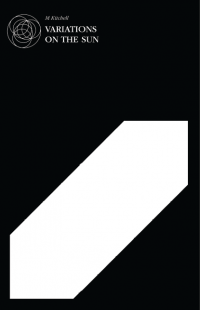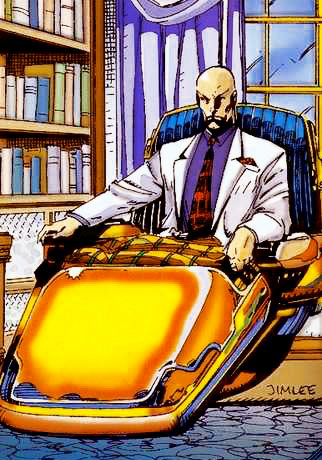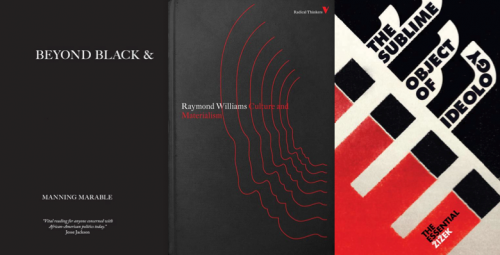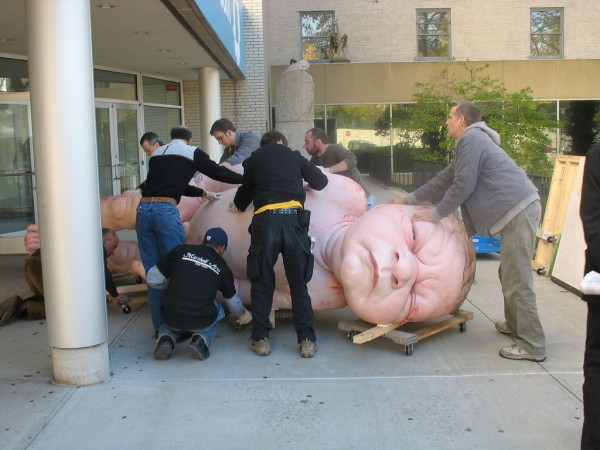Have you read Andrea Rexilius?

I don’t recall how I came across Andrea Rexilius’s “excerpt from New Organism,” published at this rad looking journal called Timber, but I’m glad I did.
At first glance I saw the word “séance,” which instantly transported me back more than a decade, to a time when I had the privilege of studying séances and mirror gazing and other such wonders with Dr. Raymond Moody (the guy who invented the phrase “near death experience”) at the Consciousness Studies Center at UNLV. But that’s a whole other story. What matters here is that Rexilius got my attention. So I eagerly read her excerpt and was so impressed I felt compelled to look for more of her work.
Here is a passage from that excerpt:
In a syllabus, I called it NECROMANCER instead of NEUROMANCER. Oops.
Are you a romantic? Do you think there’s more romance irl or in books? If in books, reading or writing them?
25 Points: Variations on the Sun
 Variations on the Sun
Variations on the Sun
by M Kitchell
Love Symbol Press, 2012
88 pages / $12 (print) $1 (digital) buy from Love Symbol Press
1. I think I bought the last physical copy of this book, but you can still buy it in pdf form. Hopefully there will be another print run or something cool happens in a second edition.
2. When I opened the envelope I thought the book was damaged because it had what looked like worn out areas on all the areas that a book normally gets worn out areas. I was kind of pissed. Those are actually just part of the design. I am really excited about that now. It reminds me of Scorch Atlas, though much more subtle, crisp, and clean.
3. The cover design reminds me of these books by Verso:
4. I don’t think any description of the book I read in advance of reading the book, does the book any justice. This kind of writing:
“
i can’t help but feel totally fucking outside of myself when i try to come to terms with my position as a body a human body in the midst of whatever-the-fuck-it-is that i’m trying to do
“
– THE SALT VOICES
is next to this kind of writing:
“
There are no faces on the bodies, no arms, no legs, no genitalia, no hair, no eyes, no fingernails, no fingers, no hands, no toes, no feet, no ears, no nose, no mouth, no eyebrows, no eyelashes, no eyes, no chest, no armpits, no nipples, no bellybutton, no ass-hole, no ass, no crotch, no torso, no hips, there are no bodies.
“
– THE NEGATION OF BODIES
There are lots of other tones and styles inside the book as well. There are also photographs. Everything looks really nice.
5. This is the first book from Love Symbol Press. If they keep this up, they will be my favorite press.
6. At times Variations on the Sun reads like a textbook on architecture. There is also a lot of violence, but sometimes it’s very cute. And other times it’s very stark. At other times still, very baroque. I have a hard time finding other poetries that compare to this one.
7. Last time I talked to Evan Lavender-Smith, he used the term New Brutalism to describe the style of Blake Butler, Christopher Higgs, M Kitchell, Ken Baumann, etc. I find the term pretty accurate when compared to Brutalism, the architectural movement born out of post-WWII Europe. At first I thought he was just riffing, talking about Blake’s review of Leaving the Atocha Station, but it made sense: New Brutalism, a literature born during the Global War on Terror.
8. I don’t really know anything about architecture, outside of wikipedia and some art history classes as an undergrad, but I find the way Brutalist structures are described by Prince Charles to be pretty amusing: “You have to give this much to the Luftwaffe, at least when it knocked down our buildings they didn’t replace them with anything more offensive than rubble.”
9. Other than things online, I haven’t read anything by M Kitchell before.
10. Looking at works of New Brutalism would be a good way to enter the book, but so would the works of New Sincerity, especially the poetry of Tao Lin. READ MORE >
December 6th, 2012 / 9:09 am
Let’s get this out in the open: what are your thoughts on the recent Duotrope Debacle?
DIED: Dave Brubeck
On May 9, 1961*, Iola Brubeck gave birth to a boy. He was given the name Charles Matthew.
The boy’s father, jazz pianist Dave Brubeck—who died today of heart failure on the way to a cardiology appointment and was a day shy of his 92nd birthday—wrote and recorded a song with his quartet called “Charles Matthew Hallelujah.”
Here’s the story I was told by a music teacher: Embedded in the song’s sections—there are two distinct sections—are, first, the words “Charles Matthew!” And then the follow-up “Hallelujah!” Follow Paul Desmond’s alto sax to hear them. Note that there seems to be an extra syllable in “Charles Matthew!” I always sing “Cha-earls Matthew!” when I sing along. The second section, a rolling sort of piano beginning at the 1:30 mark, has “I have a brand new baby boy, I have a brand new baby boy, I have a brand new baby boy, I have a brand new baby boy…” in it. The second and following “I have a brand new baby boy”s all start their “I”s on that stalled, heavy chord so the “I” takes a longer time to say. (Like Brubeck, the one who had the brand new baby boy is, in emphasizing the “I,” bragging a little. Or a lot.)
“Charles Matthew Hallelujah” is one of my favorite songs because it’s a hell of a birthday present. And a hell of a precise artistic statement about pure joy. It’s like the air in a balloon filled to capacity. The rubber skin is the constraint of time signature and the limitations of the instruments. But the air is stretching it as out as far as it will stretch.
Brubeck is nothing but all right in my book. RIP.
* A mystery: Wikipedia & IMDB say Charles Matthew was born on May 9, 1961. Wikipedia also says Time Further Out—the album “Charles Matthew Hallelujah” appears on—was “recorded” on May 3, 1961. So, six days before the birth of Charles Matthew. is Wikipedia referring to the first day of recording? Was it recorded all in one day, and Brubeck was anticipating the birth of a son? As the story was told to me, the song was recorded on the day of or the day after his birth.
The Way You Enter History: A Review of Kevin’s Varrone’s Eephus
 Eephus
Eephus
by Kevin Varrone
Little Red Leaves, Textile Series 2012
$8 Buy from Little Red Leaves
[Begin with this.]
I did not know what a fungo was until I read Kevin Varrone’s Eephus. This chapbook introduces names and facts in a way that makes you feel whomped, but there is little flexing in all this whomping. The expertise that builds this book never feels “built up” or leering. Pause. Appreciation. Reflection: when people build up an expertise, it so often snowballs into an authority that drives off listening. Not Varrone. Not Eephus. This poem is not a statistical rant. It’s not even sports writing. It’s an almanac. The best kind: the kind of almanac that comes out of Philadelphia.
Eephus sticks to the course of tumbling lyrical investigation—it’s all graces and hushes and subtle goofs. The weight of a baseball (5.25 oz) gives way to meditations upon the wait of baseball, bound together as the avoirdupois of the game (“time passing is pretty much what baseball is all about”). Waiting: for the bullpen to get warm, for the streak to end, for DiMaggio to roll over, for Ryan Howard to heal up.
The book by no means breaks in continuity from Varrone’s earlier work, which has been called a Philadelphia trilogy. Pausing to ruminate over the city plans, Varrone observes that the city itself looked like a baseball diamond in its original conception.
So what’s a box score?
It might be a personal cartography of the game, a language with dialects peculiar to whoever is holding that little pencil. In Varrone’s case, this particular scoresheet merges into the portraiture of a city he has dedicated years to graphing. Varrone points us to a painting by Morris Kantor that sets the elevation from which the poem observes all the positions.
December 5th, 2012 / 12:00 pm
AAWW Publishing Conference
25 Points: Every Laundromat in the World
 Every Laundromat in the World
Every Laundromat in the World
by Mel Bosworth
Safety Third Enterprises, 2012
48 pages / $5.00 (print) $2.00 (digital) buy from Safety Third
December 4th, 2012 / 12:09 pm
~ index.cgi?q=reading&width=1373&anim=yes ~
“Reading” is a word that can become a search term. At one website, it is possible to search for only animated images, given a specific word or phrase. These remind me that everyone looks different when they read. Reading is an activity with a necessary 3rd person visual component. I don’t really understand how someone can look like they are reading. It is like those people who try to look like they are paying attention during a meeting,

Professor X’s Magic Yellow Wheelchair
 Dear HTMLGIANT, today sees me researching Professor X’s wheelchairs for a disability studies paper that I’m writing. In particular, I’m looking for information on the magical flying yellow one that he was given by the Shi’ar Empire (I think?) in the early 1990s—the one designed by Jim Lee. If anyone can direct me to any documents describing this fabulous device, I would be most grateful. (Yes, I am trying to figure out its capabilities, including whether it housed missiles, etc.)
Dear HTMLGIANT, today sees me researching Professor X’s wheelchairs for a disability studies paper that I’m writing. In particular, I’m looking for information on the magical flying yellow one that he was given by the Shi’ar Empire (I think?) in the early 1990s—the one designed by Jim Lee. If anyone can direct me to any documents describing this fabulous device, I would be most grateful. (Yes, I am trying to figure out its capabilities, including whether it housed missiles, etc.)
So far, this site is the best I’ve been able to find. It says there:
This high-tech chair was a gift from the alien Shi’ar. Over the years, its appearance has varied a bit. Both gold and silver versions have appeared and some models have been slightly sleeker than others. [X-Men (1st series) #125]
In other words, not much. (Incidentally, that citation should be X-Men Vol. 2 #125, aka New X-Men #125. Part of what’s so maddening about researching the X-Men is how many different series there have been, and how many times those series have been retitled.)
Again, any help, much appreciated. Otherwise, feel free to chime in with your favorite memories/anecdotes/conspiracy theories regarding Marvel’s Merry Mutants.









